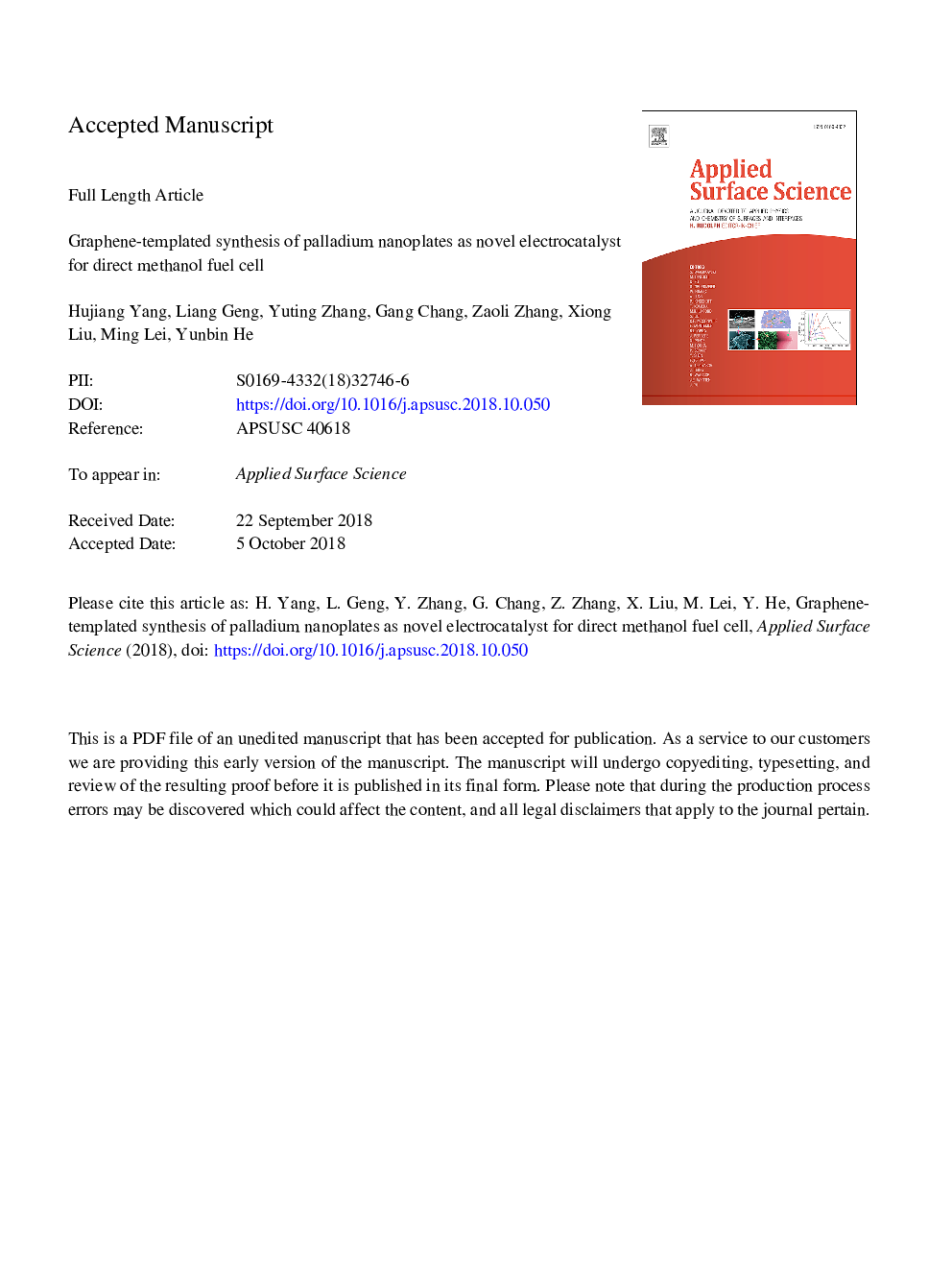| Article ID | Journal | Published Year | Pages | File Type |
|---|---|---|---|---|
| 11011494 | Applied Surface Science | 2019 | 34 Pages |
Abstract
The shape-controlled synthesis of Pd nanocrystals supported on the surface of graphene is of great importance in designing an electrocatalyst for direct methanol fuel cells. This work demonstrates the synthesis and characterization of a novel Pd nanoplate structure templated by graphene (PdNPts/G). The combined use of Poly Vingl Pyrrolidone and a graphene template is critical to successfully obtaining novel palladium nanoplates via a one-step reduction strategy using ascorbic acid as a soft reductant. In particular, owing to the presence of a high surface area to mass ratio of Pd nanoplates with dominant active {1â¯1â¯0} crystal facets and the enhanced electron transfer of graphene, the as-prepared PdNPts/G shows superior electrocatalytic activity along with satisfactory stability and greater tolerance over both the commercial Vulcan XC-72 and graphene supported Pd nanoparticles (abbr. PdNPs/V and PdNPs/G, respectively) for methanol electro-oxidation.
Keywords
Related Topics
Physical Sciences and Engineering
Chemistry
Physical and Theoretical Chemistry
Authors
Hujiang Yang, Liang Geng, Yuting Zhang, Gang Chang, Zaoli Zhang, Xiong Liu, Ming Lei, Yunbin He,
